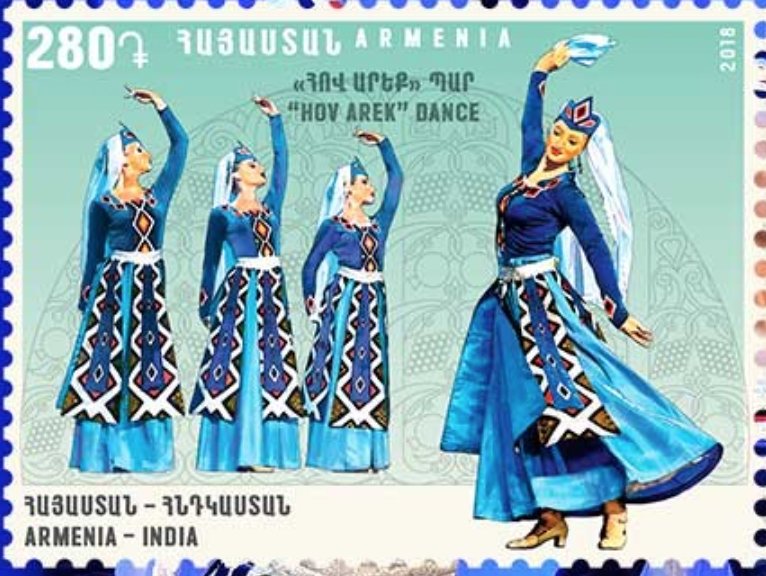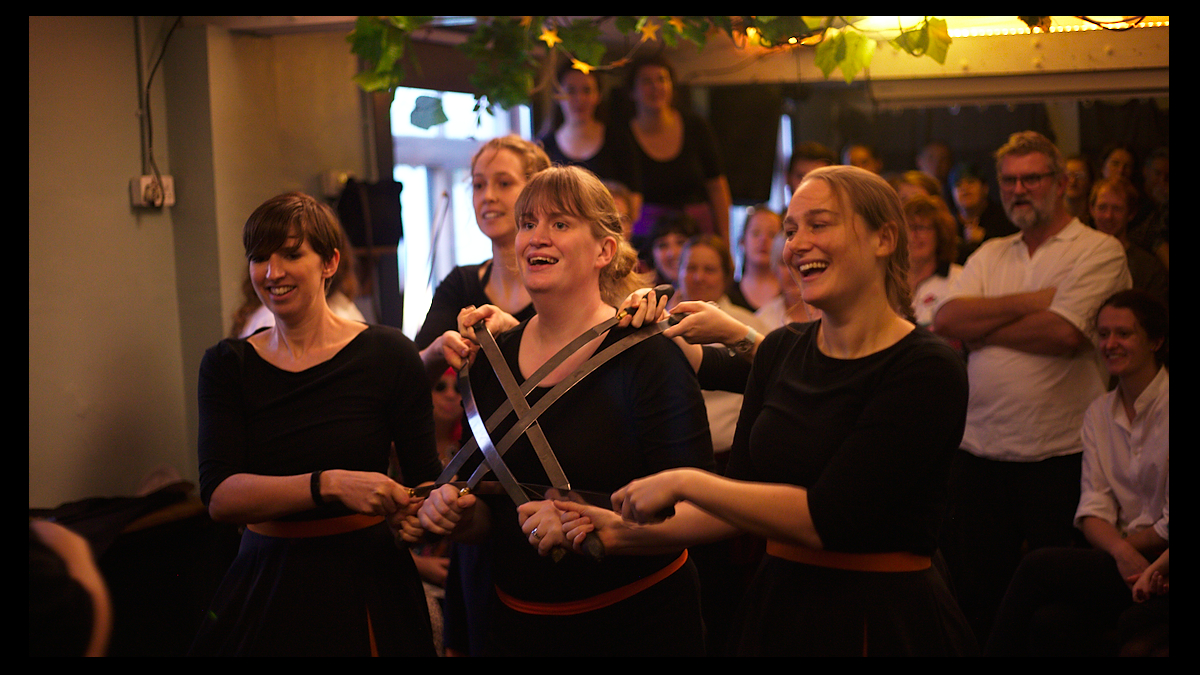|
Khorovod
The khorovod or horovod, or , , is an East Slavic and pagan art form. It is one of the oldest Russian folk dancesbeing over 1,000 years old. It is a combination of a circle dance and chorus singing, similar to the choreia of ancient Greece. The dance was also known in Russia as ''karagod'', ''tanok'' and ''krug''. Etymology The term ''khorovod'' likely descends from the Greek ''Choreia'' (Ancient Greek: χορεία); Rus' culture was heavily influenced by Greek culture. ''Khorovod'' is related to choreia ( a Greek circle dance), kolo (a South Slavic circle dance originating in Serbia, Croatia and Bosnia), hora (Balkans The Balkans ( , ), corresponding partially with the Balkan Peninsula, is a geographical area in southeastern Europe with various geographical and historical definitions. The region takes its name from the Balkan Mountains that stretch throug ...), and kochari ( Armenian and Azerbaijani folk dance). Origin and characteristics The pa ... [...More Info...] [...Related Items...] OR: [Wikipedia] [Google] [Baidu] |
Chorea (dance)
Choreia () is a circle dance accompanied by singing (see Greek chorus, ''choros''), in ancient Greece. Homer refers to this dance in his epic poem, the ''Iliad''. Terms descended from Greek ''choreia'' that are used for circle dances in a number of other countries are: * horon, in Turkey * khorovod (хоровод), in Russia * khora (хора), in Ukraine * hora, in Romania and Moldova * horo (хоро), in Bulgaria * oro (оро), in North Macedonia and Montenegro See also * Rasa lila * Greek dance * Tanabata , also known as the , is a Japanese festival originating from the Chinese Qixi Festival. It celebrates the meeting of the deities Orihime and Hikoboshi (represented by the stars Vega and Altair respectively). According to legend, the Milk ... References * Calame, Claude. 2001. ''Choruses of Young Women in Ancient Greece: Their Morphology, Religious Role, and Social Functions.'' Trans. Derek Collins and Janice Orion. Rev. ed. Lanham: Rowman & Littlefield ... [...More Info...] [...Related Items...] OR: [Wikipedia] [Google] [Baidu] |
Armenian Dance
The Armenian dance (Armenian: Հայկական պար) heritage has been considered the oldest and most varied in its respective region. From the fifth to the third millennia B.C., in the higher regions of Armenia, the land of Ararat, there are rock paintings of scenes of country dancing. These dances were most likely accompanied by certain kinds of songs or musical instruments. In the fifth century, Moses of Khoren (Movsés Khorenats'i) himself had heard of how the old descendants of Aram (that is Armenians) make mention of these things (epic tales) in the ballads for the lyre and their songs and dances. Traditional dancing is still popular among expatriate Armenians, and has also been very successfully exported to international folk dance groups and circle dance groups all over the world. All dancers wear the traditional costume to embody the history of their culture and to tell their ancestors stories. The design of these costumes are influenced by many factors, such as re ... [...More Info...] [...Related Items...] OR: [Wikipedia] [Google] [Baidu] |
Belarusian Folk Dances
Belarusian may refer to: * Something of, or related to Belarus * Belarusians, people from Belarus, or of Belarusian descent * A citizen of Belarus, see Demographics of Belarus * Belarusian language * Belarusian culture * Belarusian cuisine * Byelorussian Soviet Socialist Republic See also * * Belorussky (other) Belorussky (masculine), Belorusskaya (feminine), or Belorusskoye (neuter) may refer to: * Belorussky Rail Terminal, a rail terminal in Moscow, Russia * Belorussky (settlement), a settlement in Pskov Oblast, Russia * Belorusskaya (Koltsevaya line), ... {{disambig Language and nationality disambiguation pages ... [...More Info...] [...Related Items...] OR: [Wikipedia] [Google] [Baidu] |
Circle Dances
A circle is a shape consisting of all points in a plane that are at a given distance from a given point, the centre. The distance between any point of the circle and the centre is called the radius. The length of a line segment connecting two points on the circle and passing through the centre is called the diameter. A circle bounds a region of the plane called a disc. The circle has been known since before the beginning of recorded history. Natural circles are common, such as the full moon or a slice of round fruit. The circle is the basis for the wheel, which, with related inventions such as gears, makes much of modern machinery possible. In mathematics, the study of the circle has helped inspire the development of geometry, astronomy and calculus. Terminology * Annulus: a ring-shaped object, the region bounded by two concentric circles. * Arc: any connected part of a circle. Specifying two end points of an arc and a centre allows for two arcs that together make up ... [...More Info...] [...Related Items...] OR: [Wikipedia] [Google] [Baidu] |
Culture Of Belarus
Belarusian culture is the product of a millennium of development under the impact of a number of diverse factors. These include the Geography of Belarus, physical environment; the ethnographic background of Belarusians (the merger of Slavic newcomers with Baltic natives); the paganism of the early settlers and their hosts; Eastern Orthodox Christianity as a link to the Byzantine literature, Byzantine literary and cultural traditions; the country's lack of natural borders; the flow of rivers toward both the Black Sea and the Baltic Sea; and the variety of religions in the region (Catholicism, Orthodoxy, Judaism, and Islam).Jan Zaprudnik and Helen Fedor. "Culture", ''A Country Study: Belarus'', Federal Research Division, Library of Congress; Helen Fedor, ed. Research completed June 1995 History An early Western European influence on Belarusian culture was Magdeburg rights, Magdeburg Law—charters that granted municipal self-rule and were based on the laws of German cities. These ... [...More Info...] [...Related Items...] OR: [Wikipedia] [Google] [Baidu] |
Bulgarian Dances
Bulgarian folk dances are intimately related to the music of Bulgaria. This distinctive feature of Balkan folk music is the asymmetrical meter, built up around various combinations of 'quick' and 'slow' beats. The music, in Western musical notation, is often described using compound meter notation, where the notational meter accents, i.e., the heard beats, can be of different lengths, usually 1, 2, 3, or 4. Many Bulgarian dances are line dances, in which the dancers dance in a straight or curved line, holding hands. Overview Many Bulgarian dances are line dances, with the dancers holding hands in a straight or curved line, facing in toward the center of the dance space. Originally men and women danced in separate lines, or in a gender-segregated line in which the last woman and first man held opposite ends of a handkerchief, to avoid gender contact but today men and women often dance in mixed lines. Several different handholds are used in the different dances" * Holding hands ... [...More Info...] [...Related Items...] OR: [Wikipedia] [Google] [Baidu] |
Southern Russia
Southern Russia or the South of Russia ( rus, Юг России, p=juk rɐˈsʲiɪ) is a Colloquialism, colloquial term for the southernmost geographic portion of European Russia. The term is generally used to refer to the region of Russia's Southern Federal District and North Caucasian Federal District. The term is informal and does not conform to any official areas of the Russia, Russian Federation as designated by the OKATO, Russian Classification on Objects of Administrative Division (OKATO). History The Caucasus has been inhabited for millennia. Eastern Slavic tribes, like the Antes (people), Antes, inhabited Southern Russia at least from the 3rd century. Southern Russia played an important role in the influence of Byzantine Empire, Byzantine culture on Russia. Iran, Persian culture has also left its traces in Southern Russia. At the beginning of the second millennium, between Volga and Don, Turkic tribes established in the South of Russia Tatar states. According to histo ... [...More Info...] [...Related Items...] OR: [Wikipedia] [Google] [Baidu] |
Central Russia
Central Russia is, broadly, the various areas in European Russia. Historically, the area of Central Russia varied based on the purpose for which it is being used. It may, for example, refer to European Russia (except the North Caucasus and Kaliningrad). The 1967 book by Stephen P. Dunn and Ethel Dunn ''The Peasants of Central Russia'' defines the area as the territory from Novgorod Oblast to the north to the border with Ukraine in the south and from Smolensk Oblast to the west and Volga to the east. A review of the book clarifies that this concept is treated in the book as the historical and ethnographical one: this is the historical area of Great Russians.L. A. Anokhina, V. Iu. Krupianskaia, M. N. Shmeleva (translated by Stephen P. Dunn and Ethel Dunn), "On the Study of the Russian Peasantry", ''Current Anthropology'', ''Current Anthropology'', Vol. 14, No. 1/2 (Feb. - Apr., 1973), pp. 143-157, See also * Central Agricultural Zone (Russia) * Central Military Dist ... [...More Info...] [...Related Items...] OR: [Wikipedia] [Google] [Baidu] |
Northwest Russia
Northwest Russia, or the Russian North is the northern part of European Russia, western Russia. It is bounded by Norway, Finland, the Arctic Ocean, the Ural Mountains and the east-flowing part of the Volga. The area is roughly coterminous with the Northwestern Federal District, which it is administered as part of. Historically, it was the area of the Novgorod Republic, Novgorod and Pskov Republic, Pskov merchant republics. Although the Northwest has never been a political unit, there is some reason for treating it as a distinct region. The Volga marks the approximate northern limit of moderately dense settlement. The area to the north was valued mainly as a source of fur. The western side was the main source of squirrel, for which there was a large demand during the Middle Ages. Luxury fur, especially sable, came mostly from the northeast. Last glacial period The Weichselian glaciation that came to cover much of northwestern originated most likely from small ice fields and ice ca ... [...More Info...] [...Related Items...] OR: [Wikipedia] [Google] [Baidu] |
Folk Dance
A folk dance is a dance that reflects the life of the people of a certain country or region. Not all ethnic dances are folk dances. For example, Ritual, ritual dances or dances of ritual origin are not considered to be folk dances. Ritual dances are usually called "religious dances" because of their purpose. The terms "ethnic" and "traditional" are used when it is required to emphasize the cultural roots of the dance. In this sense, nearly all folk dances are ethnic ones. If some dances, such as polka, cross ethnic boundaries and even cross the boundary between "folk" and "ballroom dance", ethnic differences are often considerable enough to mention. Background Folk dances share some or all of the following attributes: *Dances are usually held at folk dance gatherings or social functions by people with little or no professional training, often to traditional music. *Dances not generally designed for public performance or the stage, though they may later be arranged and set for ... [...More Info...] [...Related Items...] OR: [Wikipedia] [Google] [Baidu] |



